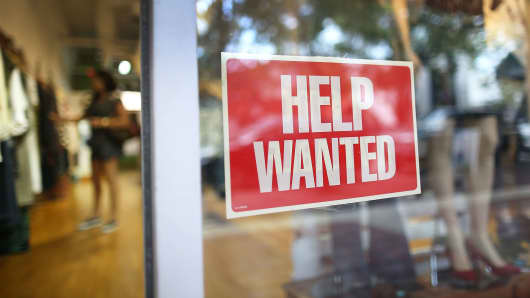The Labor Department said Friday that the U.S. unemployment rate remained at 4.9 percent in February. But does that tell the whole story?
There's no one true unemployment rate. That 4.9 percent figure is the official rate used by the government, but the Labor Department calculates a number of figures to capture what's going on in the labor market. On jobs day, they release a lot of data, each of which says something different about the state of jobs and wages.
Most economists looks past the official rate (also known as the "U-3") to the U-6, which includes more unemployed workers.





